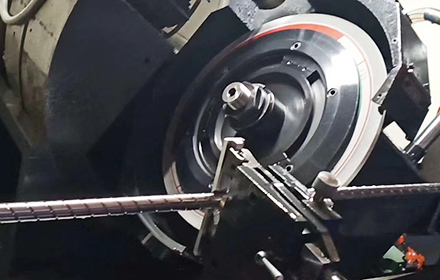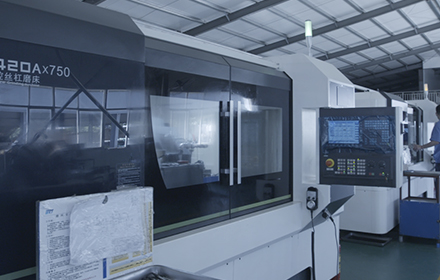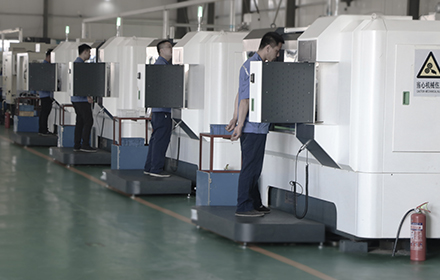In mechanical design, we often use ball screws and trapezoidal screws, which are two commonly used methods to convert rotary motion into linear motion. Among them, the ball screw is reversible due to its small friction, and it can also turn linear motion into rotational motion. VXO ball screw manufacturers call this transmission an inverse efficiency transmission. So, what's the difference between the two? When to use a ball screw?
The ball screw, which is also well understood literally, is to use the ball to roll, and where the ball rolls, of course, it rolls on the ball screw shaft. Therefore, there is a circular arc profile on the screw shaft, and this profile hovers on the shaft according to a certain lift angle (lead angle). The ball is designed in the ball nut and rolls in the arc profile of the screw shaft, so it is rolling friction. The ball screw fixes one or both ends of the screw shaft in the axial direction, and the motor drives the screw to rotate, then the nut with the steel ball will move along the axis of the screw.
The motion principle of the linear lead screw and the ball screw is the same, the difference is that there is no ball in the lead screw, so the movement between the lead nut and the screw shaft is completely dependent on mechanical contact to produce sliding, which is sliding friction, so the lead screw is also called sliding screw.
Therefore, the structural difference between the two can be summarized in one sentence: the ball screw is rolling friction, and the trapezoidal lead screw is sliding friction.
The theory shows that when the lead screw transmission efficiency is greater than 50%, there is no self-locking, and when the transmission efficiency is less than 35%, there is self-locking.
Therefore, the ball screw has no self-locking property, while the trapezoidal screw has a certain self-locking property. Therefore, for Z-direction applications, the lead screw has the advantage of self-locking. Of course, in the actual situation, factors such as accuracy and speed also need to be considered. If the ball screw is applied in the vertical direction, it is necessary to consider that it cannot be self-locking when the power is off, and additional structures or devices need to be added to ensure that the ball screw&nut assembly stays in the original position and does not slip off when the power is off, which plays an important role in safety.
The ball screw shaft is generally made of stainless steel or alloy steel, and the nut is generally made of copper, because copper can bear a large load, and at the same time, the friction coefficient is small, and it has a certain self-lubricating effect, just like some of our common linear bearings, or the flat skateboard is also made of copper. It is for this reason that the lead screw shaft is also made of stainless steel or alloy steel. For the nut, it is a little different from the ball screw. In many cases, the lead screw nut will use non-metallic materials.


